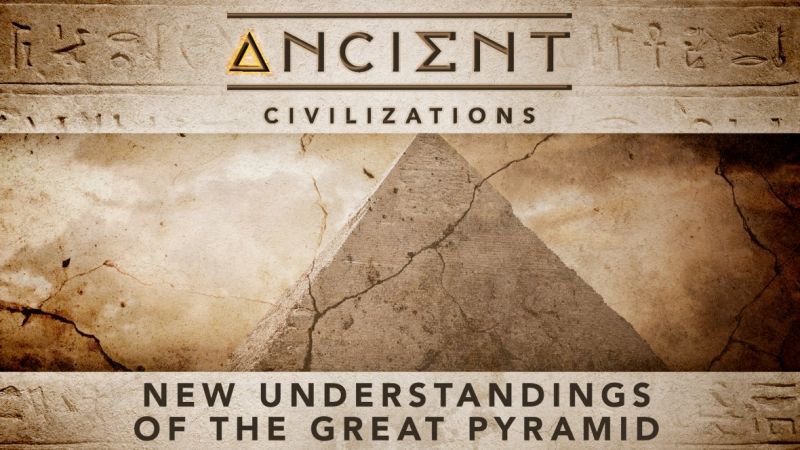Ancient Civilizations – New Understandings of the Great Pyramid: Our scholars of ancient history present a new theory concerning the Great Pyramid of Giza that you may not be familiar with. The greatest secret may not be in its construction, but as a powerful device which enabled the rebirth of Osiris as Horus. Its shape and location harbor mathematical constants, only recently discovered, that can be found throughout nature and across the universe.
Such secrets may have been known to Nikola Tesla who sought to tap into the electromagnetic currents of the earth to bring limitless electrical power to the world. Combining ancient and modern knowledge, with the enduring tales of Enki and Enlil, we may see the extent of their power struggle with the death and rebirth of Enki, as Osiris/ Horus. Since times immemorial, humankind has searched for the answers to who we are, where we came from and why are we here. Embedded into ancient mythology and our forgotten history, is a code which unlocks our connection with transcendence and paves the way for a new golden age.
Ancient Civilizations – New Understandings of the Great Pyramid
The Great Pyramid of Giza is the largest Egyptian pyramid and tomb of Fourth Dynasty pharaoh Khufu. Built in the 26th century BC during a period of around 27 years, it is the oldest of the Seven Wonders of the Ancient World, and the only one to remain largely intact. As part of the Giza pyramid complex, it borders present-day Giza in Greater Cairo, Egypt.
Initially standing at 146.6 metres (481 feet), the Great Pyramid was the tallest man-made structure in the world for more than 3,800 years. Over time, most of the smooth white limestone casing was removed, which lowered the pyramid’s height to the present 138.5 metres (454.4 ft). What is seen today is the underlying core structure. The base was measured to be about 230.3 metres (755.6 ft) square, giving a volume of roughly 2.6 million cubic metres (92 million cubic feet), which includes an internal hillock.
The Great Pyramid was built by quarrying an estimated 2.3 million large blocks weighing 6 million tonnes in total. The majority of stones are not uniform in size or shape and are only roughly dressed. The outside layers were bound together by mortar. Primarily local limestone from the Giza Plateau was used. Other blocks were imported by boat down the Nile: White limestone from Tura for the casing, and granite blocks from Aswan, weighing up to 80 tonnes, for the King’s Chamber structure.




